In the world of digital marketing, there are many tools and tactics used to bring potential customers to a given website. What those customers do once they reach a specific page, however, is the make-or-break of digital marketing. Marketers often use landing pages–stand-alone pages that a visitor lands on after clicking an online call to action–to generate leads and to create conversions. These landing pages are typically created for a specific marketing campaign or promotion, and are used extensively in online marketing for insurance agents.
Table of Contents
With the right features and attributes, a landing page can dramatically improve conversion rates, while a poorly-designed or poorly-functioning landing page can spell disaster for an online marketing campaign. In this guide, we’ll illustrate what makes a bad landing page, then provide simple tips to maximize the potential of these marketing tools for insurance marketing efforts.
Landing Page Basics
As touched on in our introduction, landing pages represent a critical tool in digital marketing. In fact, many marketing professionals believe that no marketing endeavor is complete without the use of a dedicated landing page. Created and used effectively, landing pages can produce dramatic effects, capturing the attention of potential customers and driving them towards the sales “funnel”. In simple terms, a landing page is a standalone, promotion-specific page that is not tied to a given website; its purpose is to serve as a conduit between a marketing call-to-action (CTA) and further information about a company’s products or services. There are two primary types of landing pages:
- Lead Generation landing pages – This type provides the capacity for a visitor to submit his or her contact details (typically an email address) as a means of establishing communication for subsequent marketing efforts. These landing pages often reward visitors who submit their contact information with a free item, like a downloadable ebook.
- Click-Through landing pages – Placed in between a marketing ad and the final destination (such as a company website or online shopping cart), these landing pages provide basic information about a product or service, in effect enticing the visitor to both learn more and to make a purchasing decision based on the information they receive.
Hallmarks of a Bad Landing Page
Landing pages have been used to great success in marketing campaigns across industries, and have been shown to be an effective means of creating customer interactions that result in purchases. Not all landing pages are built the same, however, and there are numerous mistakes that digital marketers make when developing and implementing this tool. Some of the common mistakes include:
- Slow-loading landing pages – Marketing industry analysts suggest that if a landing page does not load within 5 seconds, almost three quarters of potential customers will leave, negatively impacting the page’s bounce rate and hindering effectiveness.
- Complicated and cluttered layout – To be effective, a landing page must present clear and concise information – just enough to entice the visitor to continue on the knowledge journey. Cluttering up a landing page with too much information can have a negative impact, including slowing down the page loading time.
- Ineffective headlines – Headlines are often the first impression that visitors receive when landing on a page or website. Headlines that capture attention immediately and hint at the knowledge to be gained are critical, yet too many landing pages have headlines that simply do not entice viewers.
- Ineffective images – Images help tell a story, and they work to give visitors an idea of how a product or service can change their lives. Adding images that don’t relate to the story–or the product, or the tone of the landing page–can result in poor click-through performance at best, or drive customers away at worst.
Keys to Landing Page Success
Now that we know what makes a bad landing page, how can digital marketers ensure their landing pages have the features and performance needed to succeed? Optimization is key in all aspects of web-based marketing, from optimizing websites to perform well in searches and to improve the overall user experience. Landing pages are no exception; they must be optimized in order to achieve the goals desired. In online marketing for insurance agents, this can include several aspects of the landing page performance and layout.
To provide an effective landing page experience that encourages visitors to further their purchasing journey, landing pages MUST:
- Be fast to load – optimally, within two seconds of landing on the page.
- Be informative, yet not cluttered with extraneous details, graphics, and images. Less is better in landing page layout.
- Contain captivating headlines that resonate with visitors.
Finally, to ensure maximum effectiveness of landing pages in your insurance marketing campaign, it can be valuable to include a prominent Call to Action (CTA). Consider using an action verb such as “try” or “get” in the CTA to engage the reader; inclusion of an action verb has been shown to improve conversion rates by 15% or more.
With some careful consideration and an eye for detail, digital marketers can harness the incredible power of landing pages in insurance marketing campaigns. These tools may seem simple on their face, but landing pages do require optimization to achieve the desired results. The tips above will get you on your way toward success!
About Neilson Marketing Services
Since 1988, Neilson Marketing has been implementing innovative marketing solutions and strategies for our clients in all areas of marketing. Contact us today at (866) 816-1849 to put our talent, expertise, and vast resources to work for you. Let’s make things happen, together
